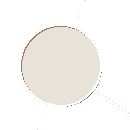
The Thrower's Page
![]() EVENTS
EVENTS
Shot
Discus
Hammer
Javelin
![]() STATS
STATS
Rankings
Age
Combos
Both hands
Other
![]() FACILITIES
FACILITIES
Layout
Sectors
Indoor
Outdoor
Insert
Racks
Overlapping
Repair
![]() INFORMATION
INFORMATION
NEW: Shoes
Paint your disc
Short wires
Physics
Pants
Training
Charting
Youth
High School
College
Wt. pentathlon
![]() OPINION
OPINION
Chip
Handle
Specs
Doping
Measuring
BASIC GLIDE SHOT TECHNIQUE
The glide and the spin are the two types of approach for the shot put. Both are designed to get the thrower into the power position with maximal momentum. I recommend that all shot putters practice both techniques at least through mid season.
The glide shot technique is very simple in principle: first, stand in the bed of a pickup truck that is parked and throw a football 20 yards. Now, stand in the bed of a truck that is moving 20 mph and throw the football with the same effort. From the point that you threw the football, it will land much further than 20 yards because the velocity of the truck is added to the velocity of your standing throw.
The thrower will have the same standing throw from the power position as in the spin shot technique. The athlete must still hit this position for an instant, with separation and weight on the back foot. However, what the thrower does to get into that position with velocity is different.
Starting position: The thrower puts his right foot right in the middle of the back of the circle with toes right against the edge of the circle.
Sit: To start, the athlete pikes over and then starts to fall back with his rear as if falling into a chair-seated position. Think about dropping the hip joint down and back. This is commonly referred to as "seating." During seating, the two knees are about side by side.
When the left knee approaches a 60-degree bend, the athlete quickly extends the left leg back to an almost straight position, and simultaneously pushes off with the right foot.
The thrower glides in mid air across the circle with the right and left toes an inch or two off the ground, and both legs almost straight in a forward split. The split angle is about 90 degrees.
At the end of the glide, the right foot lands in the middle of the circle with the left knee bent at 75 degrees and the toes pointing 90 degrees. Therefore, when the right foot is in mid air, the foot turns 90 degrees and the right knee is rebent under the body.
The left foot lands at the same time as the right foot, a few inches behind the toeboard at the front of the circle. When both feet land, that is the instant when the thrower must be in the ideal power position: weight is back on the right foot, bent 75 degrees. The right foot is pointed to the side in the middle of the circle, and the left foot is a few inches behind the toeboard, and a few inches to the left of center.
Up to this point, the upper body has done nothing. The shoulder line is facing back, and there it remains through the glide.
The hips start facing back at the start of the glide (aligned with shoulders). During the glide, the hips advance 90 degrees so that separation is 90 degrees at the end of the glide, when the feet land.
Now the final delivery--standing throw and follow through--is identical to that of the spin. Refer to the power position page.
A beginner technique that is similar to the glide is called the shuffle. The shuffle may be walking or running. Instead of kicking back the left foot and gliding across the circle, the thrower places the left foot down about 2 feet away from the right foot. Then the right foot steps to the center and the left foot immediately lands at the front of the circle in the power position.
The shuffle is not as effective as the glide, but most beginners can add 2-4' to their standing throw by doing a shuffle. Then they can progress to the glide.
Training index | The Thrower's Page